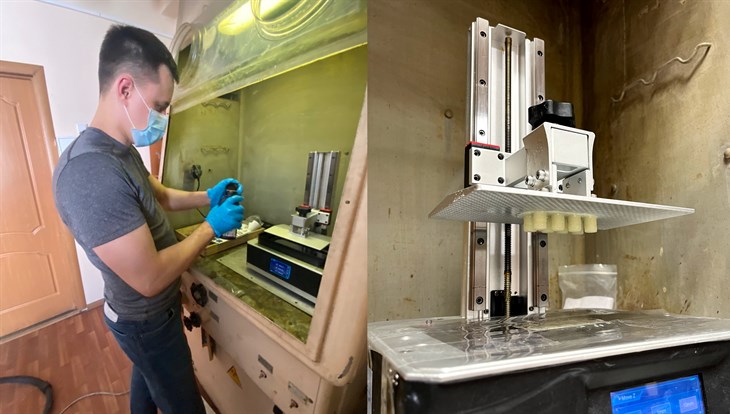Tomsk State University scientists are launching a project to study new compounds for additive manufacturing to be used in rocket science. For two years, they will be studying 3D printing powder compounds, which, under certain conditions, can be used to obtain complex solid-fuel propellants used in rocket engines.
Led by Aleksandr Zhukov, Doctor of Physical and Mathematical Sciences, the project Physical and Chemical Foundations of the High-Energy Materials Technology in Additive Manufacturing received a grant from the Russian Science Foundation (RSF).
The Groundwork for Developing Rocket Science
As stated on the RSF website, the project is aimed at solving one of the current issues in rocket science. Solid-propellant engines are becoming more present in this area, given that they are more reliable and do not require lengthy and complex preparation for launch. Creating appropriate types of rocket fuel is necessary for developing new blueprints for such engines. Among the important tasks in this scenario is not only the search for new components, but the refinement of possible geometric shapes for solid-fuel propellants.
“With classic manufacturing technologies, creating such shapes for propellants would be either impossible or extremely difficult. The project aims to tackle the challenge of creating new high-tech additive manufacturing methods based on high-energy materials included in solid-fuel compounds,” the project description on the RSF website says.
What Scientists Will Do
The end goal, as envisioned by the scientists, is to develop the physical and chemical foundations of the technology producing high-energy compounds: the compounds in turn would make it possible to create new propellant shapes and other components used in solid-fuel engines. The compounds should cure in the ultraviolet range and be fit for the additive method of projection stereolithography (SLA) 3D printing technique.

The scientists will begin working with powder compounds based on aluminum, perchlorate, and ammonium nitrate. A photoinitiator, as well as acryl monomer and oligomer-based polymers, will be a base for compounds used as UV-curable binders.
“Right now, people involved in the industry are only starting to consider using additive manufacturing to create certain products. The compounds and the technique that we offer enable creating complex-shaped items that would be impossible or very time-consuming to acquire otherwise,” shares Dmitriy Tkachyov, a project executor and TSU postgraduate student.
A Promising Area
The TSU research team has won the RSF 2023 and 2024 grants. Annual funding will be 1.5 million rubles.
“The funding will give us the necessary headstart. To start working on the supported project would be the initial stage for immersing a small pool of people in the new field: if there are positive results in the first two years, they will be happy to continue working within the field,” explains Dmitriy Tkachyov.
In two years the TSU research team intends to acquire the necessary compounds for 3D printing, evaluate their UV-impacted curing mechanisms, and study the cured samples. They will study in detail the structural and physical properties of the obtained materials, as well as their mechanical, energetic, and other characteristics.
“The high-energy compounds with UV-curable binders, their manufacturing techniques, and the overall research results—all presented and studied as part of the project—will lay the foundation for the future studies in the rapidly growing field of additive manufacturing,” the RSF website summarizes.
Original article by: RIA Tomsk. Photo provided by: Dmitriy Tkachyov.